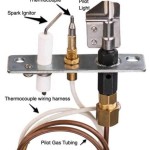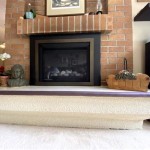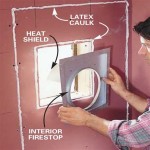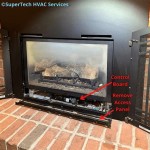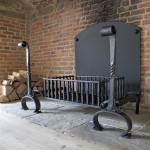Pellet Stove Fireplace Inserts Reviews: A Comprehensive Guide
Pellet stove fireplace inserts offer an efficient and environmentally conscious way to heat a home. These appliances transform existing masonry or zero-clearance fireplaces into cost-effective heat sources, utilizing compressed wood pellets made from recycled materials. This article provides a detailed overview of pellet stove fireplace inserts, examining their operation, benefits, key features to consider, and reviews of popular models.
A pellet stove fireplace insert operates by automatically feeding wood pellets from a hopper into a burn pot. An electric igniter ignites the pellets, and a combustion fan provides airflow for efficient burning. The heat generated is then circulated into the room using a convection fan. The temperature is controlled by adjusting the pellet feed rate and fan speed, often managed by a thermostat. Ash is collected in an ash pan, which requires periodic emptying.
The appeal of pellet stove inserts stems from their high heating efficiency, often exceeding 80%. Compared to traditional wood-burning fireplaces, which can lose significant heat up the chimney, pellet stoves direct the majority of the heat into the living space. This translates into lower heating bills and reduced reliance on fossil fuels. Furthermore, the controlled combustion process in a pellet stove results in significantly lower emissions compared to open fireplaces, contributing to cleaner air quality.
Understanding Key Features of Pellet Stove Fireplace Inserts
Selecting the right pellet stove insert requires careful consideration of several features. Key aspects to evaluate include heating capacity, hopper size, BTU output, efficiency ratings, thermostat control, and venting requirements.
Heating Capacity (BTU Output): Measured in British Thermal Units (BTUs), heating capacity signifies the amount of heat the insert can generate per hour. The BTU requirement depends on the size of the area to be heated, climate conditions, and the home's insulation level. An undersized unit will struggle to maintain a comfortable temperature, while an oversized unit may cycle on and off frequently, leading to inefficient operation. Manufacturers provide BTU ratings based on square footage coverage. Consult these ratings and factor in regional climate and insulation effectiveness when choosing a model.
Hopper Size: The hopper is the container that stores the wood pellets. A larger hopper capacity translates to longer burn times between refills. Consider the convenience of less frequent refills, especially during peak heating season. Hopper sizes are typically measured in pounds. Determine how often you are willing or able to refill the hopper and choose a size that aligns with your needs.
Efficiency Ratings: Pellet stoves are rated for efficiency, typically expressed as a percentage. Higher efficiency ratings signify that a larger proportion of the fuel's energy is converted into usable heat. Look for models with efficiency ratings of 80% or higher to maximize fuel economy and reduce operational costs.
Thermostat Control: Thermostat control allows the user to maintain a consistent room temperature. Some models offer basic on/off control, while others feature advanced programmable thermostats with multiple temperature settings and timer functions. Programmable thermostats offer greater flexibility and energy savings by allowing the user to adjust the temperature based on occupancy patterns and time of day.
Venting Requirements: Pellet stoves require venting to exhaust combustion gases. Unlike traditional fireplaces, pellet stoves use smaller diameter venting pipes, typically 3 or 4 inches in diameter. Venting can be installed through an existing chimney (with a liner) or directly through an exterior wall. Adherence to manufacturer's recommendations and local building codes is crucial for safe and efficient venting.
Factors Influencing Pellet Stove Insert Selection
Beyond the core features, several other factors influence the selection of a suitable pellet stove insert. These encompass installation considerations, fuel costs, emission standards, maintenance requirements, and aesthetic preferences.
Installation Considerations: Installing a pellet stove insert involves connecting the unit to a power source, connecting the venting system, and ensuring proper clearances around the insert. While some homeowners opt for self-installation, professional installation is recommended, especially for complex venting configurations or when dealing with gas or electrical connections. Professional installation ensures that the insert is installed correctly and complies with all applicable codes.
Fuel Costs: The cost of wood pellets varies depending on location, season, and quantity purchased. Compare the cost of pellets to other heating fuels, such as natural gas, propane, or heating oil, to determine the potential cost savings. Generally, pellet heating is a cost-effective option, particularly in regions where wood pellets are readily available and reasonably priced.
Emission Standards: Pellet stoves are subject to emission standards, typically regulated by the Environmental Protection Agency (EPA). Look for models that are EPA-certified to ensure they meet stringent emission limits. EPA-certified stoves burn cleaner and produce less air pollution compared to non-certified models.
Maintenance Requirements: Pellet stoves require regular maintenance to ensure optimal performance and longevity. This includes emptying the ash pan, cleaning the burn pot, and inspecting the venting system. Some models require more frequent maintenance than others. Consider the maintenance requirements when choosing a unit and budget time for routine cleaning and inspection.
Aesthetic Preferences: Pellet stove inserts are available in a variety of styles and finishes to complement different home décor. Choose a model that aligns with personal aesthetic preferences and the overall design of the room. Some models feature realistic flame displays, while others offer more contemporary designs.
Reviews of Popular Pellet Stove Fireplace Inserts
The pellet stove insert market offers a range of models catering to diverse heating needs and budgetary constraints. Examining several prominent models provides insight into the features and performance characteristics of available options.
Enviro EF5: The Enviro EF5 is a high-efficiency pellet stove insert known for its powerful heating capacity and quiet operation. It features a large hopper, programmable thermostat, and automatic ignition. The EF5 is EPA-certified and offers low emissions. The ash pan is easily accessible for convenient cleaning. Users often praise its reliable performance and consistent heat output.
ComfortBilt HP22i: The ComfortBilt HP22i is a popular choice for its affordability and ease of use. It features a digital control panel, automatic ignition, and a large viewing window. The HP22i is EPA-certified and offers a good balance of performance and value. While it might not have all the advanced features of higher-end models, it provides reliable heating for moderately sized spaces.
Breckwell Big E Insert: The Breckwell Big E insert is designed for larger homes and offers a high BTU output. It features a large hopper, automatic ignition, and a user-friendly control panel. The Big E is known for its robust construction and long-lasting durability. It’s a suitable choice for homeowners requiring significant heating capacity.
Harman P35i: Harman stoves are renowned for their quality and innovative features. The P35i model embodies this reputation, featuring automatic ignition, room temperature sensing, and a patented feed system. Its sophisticated controls and consistently efficient operation make it a premium option. The Harman P35i is known for its quiet operation and consistent performance, and long lifespan.
When examining reviews, it's critical to focus on factors like heating capacity adequacy for the intended space, the frequency of required maintenance, verifiable efficiency ratings and comparisons to other heating options based on local fuel costs. Also, prioritize models that boast positive feedback regarding user-friendliness and durability.
Ultimately, selecting the optimal pellet stove fireplace insert necessitates a thorough evaluation of individual heating requirements, budget constraints, and aesthetic preferences. By carefully considering the factors outlined in this article and reviewing the specifications and performance characteristics of various models, homeowners can make an informed decision and enjoy the benefits of efficient and eco-friendly pellet heating.

Pellet Stove Inserts Turn Drafty Fireplaces Into Heaters Complete Home Concepts

Fireplace Inserts Gas Wood Pellet Electric Best Fire Hearth Patio

Pellet Fireplace Inserts Complete Home Concepts

Enviro M55 Multi Fuel Fireplace Insert Friendly Fires

Pellet Fireplace Inserts Insert Installation In Burlington Wi More

Gci60 Cast Iron Pellet Stove Insert Regency

Pellet Fireplace Inserts Chimney Sweep

Wood Stoves Pellet Gas Fireplace Inserts

Comfortbilt Hp22i Pellet Stove Fireplace Insert

Quadra Fire Castile Wood Pellet Insert Top Hat Home Comfort Services

